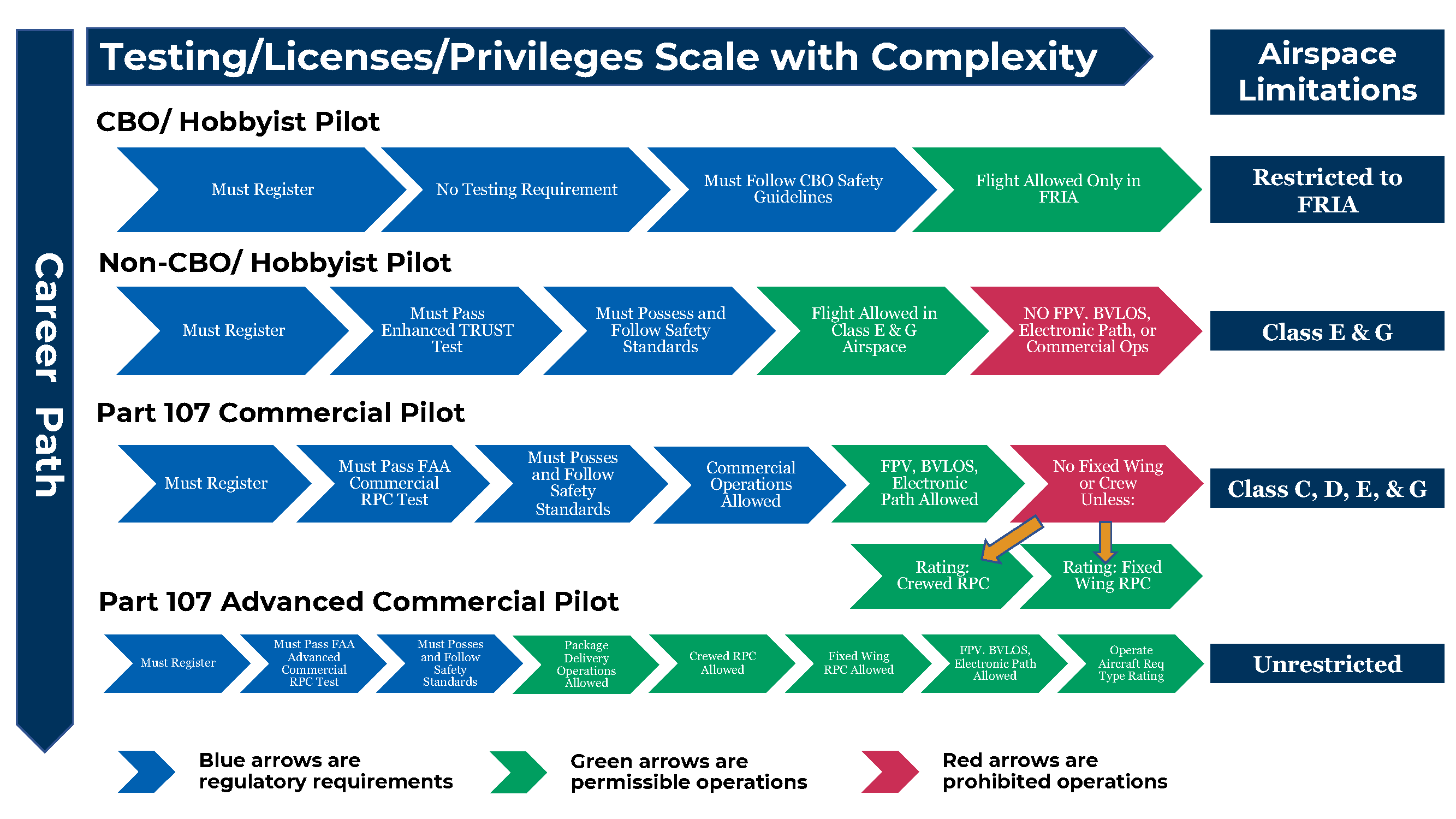How did flying become the safety way to travel? Despite speeds regularly over 500 miles per hour, heavy vehicles carrying hundreds of people, and thousands of gallons of fuel, aviation undoubtedly has the best safety record of any mode of transportation. U.S. commercial aviation only saw one fatality in the past 12 years despite moving hundreds of millions of passengers. That performance is no coincidence. Through decades of safety requirements, the industry has created a culture of safety and implemented safety management systems (SMS) that instill safety traditions from the front-line workforce to the board room.
The next step for aviation is to infuse that same safety culture into the emerging industry of uncrewed aircraft systems (UAS). Eno’s newest report, Guiding the New UAS Industry to Safety Excellence, outlines practical steps to expand adoption of key principles of safety culture and Safety Management Systems (SMS) based on analysis of public expectations, the composition of the UAS industry, traditional aviation safety tools, and prior DOT experience in promulgating these in new transportation industries. Given that the UAS industry is young, now is the time to lay the foundation for future safety.
Among its recommendations, the report presents a recommended testing and licensing schema tied to a large safety culture framework (see figure below). This framework shows how the testing, licenses, and thus privileges scale with complexity. And it provides a career path for the UAS hobbyists that want to expand their ability to fly UAS professionally.
Importantly, this work acknowledges the difference between commercial and recreational users. The recommendations involve few changes to the existing regime for hobbyists and recreational UAS pilots. For commercial operators, who present a higher level of risk, the recommendations propose a new testing and licensure requirement tied to a larger safety culture framework.

The timing for these recommendations on the UAS industry coincide well with a larger push at the FAA to mandate SMS to other parts of the aviation industry beyond regularly scheduled (Part 121) carriers. The current proposal would mandate SMS on Part 135 (charter services), Part 141 (repair stations), and Part 91 (air tour operators). SMS for larger commercial operators and UAS manufacturers is a logical next step.
This work builds off Bridging the Gap, a 2020 Eno paper that examined the broader regulatory environment for the nascent UAS industry. The work was advised by Eno’s Aviation Working Group, a panel of key industry shareholders, has helped Eno’s aviation work for the past eight years.
We acknowledge that industry and regulators are achieving many notable successes in creating effective policies to facilitate the integration of UAS into the National Airspace System (NAS). While these new requirements for testing and licensure might seem unnecessary, consider the alternative. As with any serious aviation incident in the past, Congress has a propensity to react quickly and set new rules in the aftermath. The same is likely to happen if a drone operator creates a major crash with a commercial plane. It is incumbent on the aviation industry to develop proactive safety policies now to limit reflexive and possibly irreversible expectations and rules around safety at some point in the future.
The paper is available for free download here and a webinar with the paper’s author discussing the subject can be found here.




